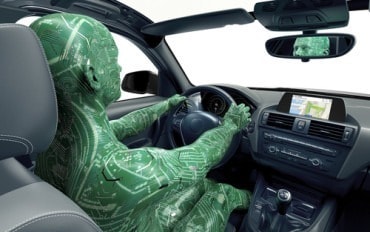
Researchers are exploring a new ridesharing model to maximize the availability of vehicles by optimally routing empty cars.
Ridesharing services like Uber and Lyft dispatch a car once a rider requests a ride. Whether or not one is close by is a matter of chance. Researchers are exploring a new model for rideshare companies. The model focuses on maximizing the availability of rideshares by optimally routing empty cars.
All rideshares start off waiting for a rider summons a car. to initiate on a passenger. If an empty car is available, the passenger occupies that car and travels to his or her destination. If no empty car is available within a short period, the passenger abandons that order either trying another rideshare service or an alternative form of transportation.
See also: How Real-Time ML Helps Google Maps Predict Bus Delays Worldwide
From the driver’s perspective, once a driver drops off a passenger, should the driver stay in that area to hopefully find new passengers immediately or relocate without a passenger to a different place, risking time spent driving without a passenger and without getting paid?
So how does a rideshare company ensure a car is available?
New research published in the Institute for Operations Research and the Management Sciences (INFORMS) journal Operations Research offers a way to control the flow of empty cars to shorten wait times and make efficient use of the vehicles in service at any given time. The work was conducted by Anton Braverman of Kellogg School of Management at Northwestern University, Jim Dai of The Chinese University of Hong Kong, Shenzhen and Cornell University, Lei Ying of the University of Michigan and Xin Liu of Arizona State University.
Algorithms developed by the researchers direct an empty car after it drops off a passenger to a different location instead of waiting at the same location to match the geographic imbalance of passenger demands. In a way, this mimics the way savvy baseball players use knowledge of a hitter’s patterns and start moving before a ball is pitched to be in the right spot to make a play.
Driving empty cars to a specific location after a passenger has been dropped off seems to be a waste of resources. However, it turns out to be necessary and imperative to maximize the availability of rideshare services in the presence of the geographic imbalance of passengers.
“The new car flow control policy is based on historical data for time-dependent futurecast to anticipate route changes and direct cars accordingly,” said Braverman. “You can calculate the availability of empty cars when they are requested and find new passengers quickly once a driver reaches a destination.”
If such algorithms are one day deployed, one issue that will need to be addressed is whether the driver is compensated for the gas and time to get to the designated area. The researchers working on this project suggest rideshare companies might include incentives like paying these costs or giving the driver an hourly fee for moving from one place to another.






